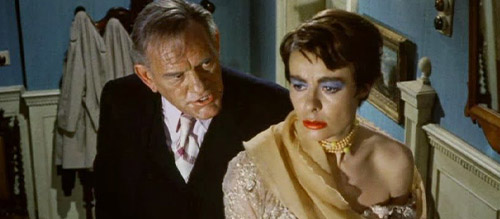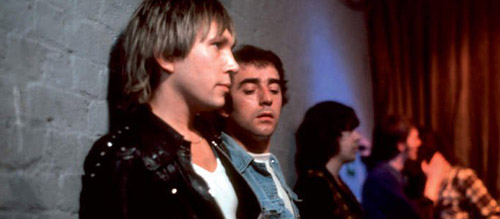5 Must-Watch Early British LGBTQ+ Films
3. Sunday Bloody Sunday (1971)
Sunday Bloody Sunday is an important film in the history of British LGBTQ+ cinema. Not only is it the first film that deals explicitly with bisexuality, but it is also the first film that depicts two men kissing.
Sunday Bloody Sunday focuses on Alex (Glenda Jackson), a recent divorcee who is dating Bob (Murray Head), who is also dating Daniel (Peter Finch), a doctor.
Unfortunately, Bob isn’t given much of a personality beyond being bisexual – he is more a vehicle for the other two characters to relive their youth and have some fun. Sunday Bloody Sunday unfortunately reinforces some stereotypes about bisexuals, specifically that Alex is polyamorous, but this specifically is used as a way to signpost that the character is bisexual.
For both Alex and Daniel, the younger man represents a break with their repressive pasts, and though they know that Bob is seeing both of them, neither is willing to let go of the youth and vitality he brings to their otherwise stable lives.
Although not the perfect representation of bisexuality, this is still one to seek out if you are interested in LGBTQ+ cinema history. It also has an amazing cameo from June Brown of ‘EastEnders’ fame.
4. I Want What I Want (1972)
I Want What I Want is a surprisingly progressive film for its era.
The film focuses on the transgender experience in a sensitive matter. Wendy (Anne Heywood) is presented as being trapped inside a man’s body, and referred to by her father as ‘delicate’.
Wendy has a coming out scene and despite it being dramatic and somewhat violent, the sympathy always lays with her and not with her father.
After coming out, Wendy leaves her family home, no longer Roy. There is a makeover scene, which if viewed negatively can suggest that all you need to be a woman is a nice dress and some eyelashes, but it is presented as empowering for Wendy, who is interested in fashion and beauty because those are her interests, not because she is a woman. Once she has these dresses and her makeup, she is free.
Wendy is played by a cisgender woman, which is unexpected for such an early representation of trans people – to have her be played by a cisgender woman rather than a cisgender man is interesting.
I Want What I Want does of course feature heartache, but this is overall a sympathetic depiction of a trans woman, even if it’s not ideal by modern standards.
5. Nighthawks (1978)
Nighthawks tells the story of gay men in London in the late 1970s. It focuses on Jim (Ken Robertson), a geography teacher who visits gay pubs and bars in the evening. The film is shot in a realistic, almost documentary style, showing the day to day experiences of gay men. We see Jim meeting men, sleeping with them, dropping them off at the tube in the morning and heading off to work.
There are moments in the film that can seem slow at times, and it is sometimes awkward in its dialogue – the naturalism of the film makes it feel as though it was created for its audience to gain an insight into a different life rather than to appeal to those within the community itself.
It is important to bear in mind when viewing Nighthawks that this was made and released before the AIDS crisis. There is not a negative shadow cast over the lives of these characters. In watching Nighthawks we can feel secure in watching Jim having casual relationships, a novelty unfortunately lost post-epidemic.
Although it is important to see representation of the devastating impact the AIDS crisis had on the lives of gay men, it is refreshing to watch a film about the experiences of gay men without the anxiety that the crisis can bring.
Recommended for you: 5 British and Irish Films That Don’t ‘Bury Their Gays’
What do you think of the films listed here? If you haven’t seen them, would you consider doing so now you’ve read about them? Let us know in the comments below, and be sure to follow The Film Magazine on Facebook and Twitter to keep up to date with more articles like this one.




